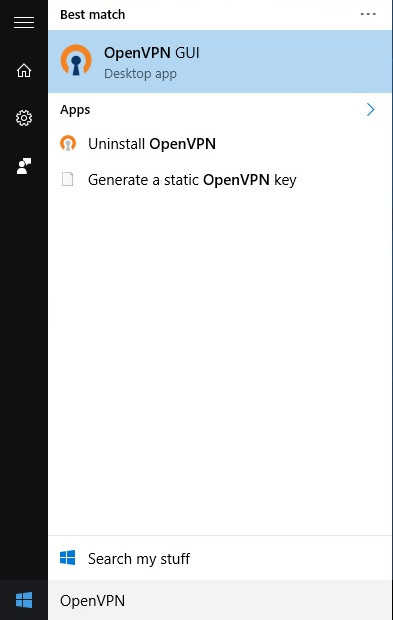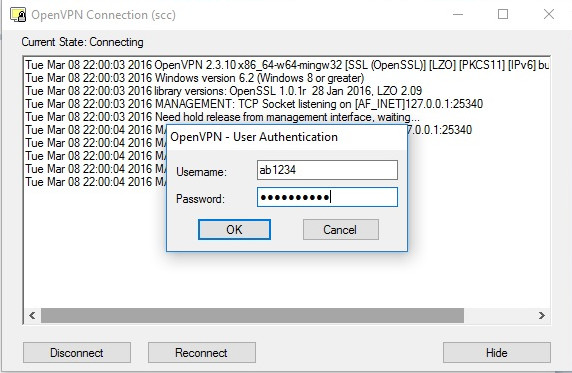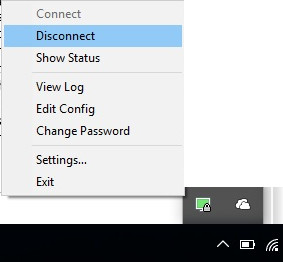Windows
Windows settings
These instructions require administrator privileges. If you do not have admin privileges, please contact your IT officer / IT administrator.
Short instructions:
- The install file for the OpenVPN client can be downloaded here
- Start the OpenVPN client from the start menu ("OpenVPN GUI"). The OpenVPN icon appears in the bottom right corner.
- Save the default configuration file by right clicking on the link.: kit.ovpn or kit-split.ovpn
Configuration for VPN2VLAN: kit-vpn2vlan.ovpn - Rightclick on the OpenVPN icon in the bottom right corner and click on "Import" to import the just downloaded file.
- Rightclick on the OpenVPN icon in the bottom right corner and click on "Connect"
Detailed instructions:
When encountering problems please read our FAQ for OpenVPN.
Windows 10/11
Download the install file from the official website (here). Download the ".msi" file, which is suitable for your operating system (normally this is "Windows 64-bit MSI isntaller), open it and confirm all security dialogs.
The OpenVPN setup will start. Accept the license agreement, confirm the selection of OpenVPN components and then click on "Install". Check "Start OpenVPN GUI", uncheck "Show Readme" and click on "Finish". Start the OpenVPN GUI.
Before you can establish a VPN connection, you have to download the configuration file. Rightclick here and choose "Save target as..." at an arbitrary location. Rightclick on the OpenVPN icon in the bottom right corner and click on "Import" to import the just downloaded file.
Rightclick on the OpenVPN icon [figure 4] and choose "Connect". Enter user name and password of your KIT account (e.g. ab1234 or uxxxx) [figure 5]. After successfully connecting, the OpenVPN icon will turn green. If you want to terminate the VPN connection, rightclick on the OpenVPN icon and then on "Disconnect" [figure 6]. To close OpenVPN click on "Exit" [figure 6].
Hint for IT responsibles/IT administrators
If you install OpenVPN as an administator on a user's computer you should put the configuration file in the global system path C:\Programme\OpenVPN\config instead of using the import function of the OpenVPN client. If the user should be able to import configuration files himself without administrator privileges the group "OpenVPN Administrators" must exist and the user must be a member of it.





